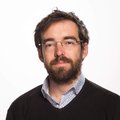Building interactive, reproducible data analysis with datakits
Tutorial Room A | Thu 22 Jan 1:30 p.m.–3:10 p.m.
Presented by
-

James Wilmot
@jimmy_wilmot@mastodon.social
https://jameswilmot.me/
James is a volunteer, research software engineer, adventure bike tourer, harvest farm operations hand, runner, and web application developer. He has worked in non-for-profit, government, university and private sectors.
James believes in contributing to community, and its power to build connection, resilience and inspiration.
From sailing on the STS Young Endeavour to riding the length of Aotearoa New Zealand, he has had the immense privilege of many mad adventures.
James partners with driven and talented people, teams and organisations to produce extraordinary outcomes.
And he aspires to work in Antarctica with the Australian Antarctic Program.
-

Varvara is a software engineer with a physics background who specialises in creating easy-to-use software for research data analysis and visualisation. She is a developer of opendata.studio - a platform designed to make research data analysis more open, accessible and reproducible. In her spare time, she helps run Make Hack Void, a community makerspace/hackerspace in Canberra.
James Wilmot
@jimmy_wilmot@mastodon.social
https://jameswilmot.me/
James is a volunteer, research software engineer, adventure bike tourer, harvest farm operations hand, runner, and web application developer. He has worked in non-for-profit, government, university and private sectors.
James believes in contributing to community, and its power to build connection, resilience and inspiration.
From sailing on the STS Young Endeavour to riding the length of Aotearoa New Zealand, he has had the immense privilege of many mad adventures.
James partners with driven and talented people, teams and organisations to produce extraordinary outcomes.
And he aspires to work in Antarctica with the Australian Antarctic Program.
Varvara is a software engineer with a physics background who specialises in creating easy-to-use software for research data analysis and visualisation. She is a developer of opendata.studio - a platform designed to make research data analysis more open, accessible and reproducible. In her spare time, she helps run Make Hack Void, a community makerspace/hackerspace in Canberra.
Abstract
In this tutorial Varvara and James will walk you through putting together a model fitting datakit which can be published to the opendata.studio platform or run using the datakit command line tool.
What are datakits?
In opendata.studio, a datakit is a structured way to organise and bundle a data analysis in a reusable and reproducible format.
A datakit contains:
- the analysis algorithm and its execution environment
- saved run states from algorithm executions
- input and output data, along with configurable options
- visualisations of data, including graph and table specifications
- user interface definitions.
These elements are defined by individual components inside each datakit:
- resources: store tabular data
- algorithms and containers: define the algorithm code and execution environment
- views: visualise data (e.g.: graphs)
- interfaces: describe user interfaces for the analysis, rendered through web components.
Learn more about datakits: https://docs.opendata.studio/intro/intro/
In this tutorial Varvara and James will walk you through putting together a model fitting datakit which can be published to the opendata.studio platform or run using the datakit command line tool.
What are datakits?
In opendata.studio, a datakit is a structured way to organise and bundle a data analysis in a reusable and reproducible format.
A datakit contains:
- the analysis algorithm and its execution environment
- saved run states from algorithm executions
- input and output data, along with configurable options
- visualisations of data, including graph and table specifications
- user interface definitions.
These elements are defined by individual components inside each datakit:
- resources: store tabular data
- algorithms and containers: define the algorithm code and execution environment
- views: visualise data (e.g.: graphs)
- interfaces: describe user interfaces for the analysis, rendered through web components.
Learn more about datakits: https://docs.opendata.studio/intro/intro/